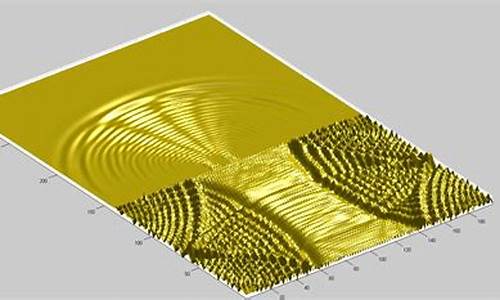 本站提倡有节制游戏,合理安排游戏时间,注意劳逸结合。
本站提倡有节制游戏,合理安排游戏时间,注意劳逸结合。 1.matlab 没有wavefast函数,源码怎么回事,我是2012a
2.Matlab实现小波变换

matlab 没有wavefast函数,怎么回事,我是2012a
function [c, s] = wavefast(x, n, varargin)
%WAVEFAST Perform multi-level 2-dimensional fast wavelet transform.
% [C, L] = WAVEFAST(X, N, LP, HP) performs a 2D N-level FWT of
% image (or matrix) X with respect to decomposition filters LP and
% HP.
%
% [C, L] = WAVEFAST(X, N, WNAME) performs the same operation but
% fetches filters LP and HP for wavelet WNAME using WAVEFILTER.
%
% Scale parameter N must be less than or equal to log2 of the
% maximum image dimension. Filters LP and HP must be even. To
% reduce border distortion, X is symmetrically extended. That is,
% if X = [c1 c2 c3 ... cn] (in 1D), then its symmetric extension
% would be [... c3 c2 c1 c1 c2 c3 ... cn cn cn-1 cn-2 ...].
%
% OUTPUTS:
% Matrix C is a coefficient decomposition vector:
%
% C = [ a(n) h(n) v(n) d(n) h(n-1) ... v(1) d(1) ]
%
% where a, h, v, and d are columnwise vectors containing
% approximation, horizontal, vertical, and diagonal coefficient
% matrices, respectively. C has 3n + 1 sections where n is the
% number of wavelet decompositions.
%
% Matrix S is an (n+2) x 2 bookkeeping matrix:
%
% S = [ sa(n, :); sd(n, :); sd(n-1, :); ... ; sd(1, :); sx ]
%
% where sa and sd are approximation and detail size entries.
%
% See also WAVEBACK and WAVEFILTER.
% Copyright - R. C. Gonzalez, R. E. Woods, & S. L. Eddins
% Digital Image Processing Using MATLAB, Prentice-Hall,
% $Revision: 1.5 $ $Date: // :: $
% Check the input arguments for reasonableness.
error(nargchk(3, 4, nargin));
if nargin == 3
if ischar(varargin{ 1})
[lp, hp] = wavefilter(varargin{ 1}, 'd');
else
error('Missing wavelet name.');
end
else
lp = varargin{ 1}; hp = varargin{ 2};
end
fl = length(lp); sx = size(x);
if (ndims(x) ~= 2) | (min(sx) < 2) | ~isreal(x) | ~isnumeric(x)
error('X must be a real, numeric matrix.');
end
if (ndims(lp) ~= 2) | ~isreal(lp) | ~isnumeric(lp) ...
| (ndims(hp) ~= 2) | ~isreal(hp) | ~isnumeric(hp) ...
| (fl ~= length(hp)) | rem(fl, 2) ~= 0
error(['LP and HP must be even and equal length real, ' ...
'numeric filter vectors.']);
end
if ~isreal(n) | ~isnumeric(n) | (n < 1) | (n > log2(max(sx)))
error(['N must be a real scalar between 1 and ' ...
'log2(max(size((X))).']);
end
% Init the starting output data structures and initial approximation.
c = []; s = sx; app = double(x);
% For each decomposition ...
for i = 1:n
% Extend the approximation symmetrically.
[app, keep] = symextend(app, fl);
% Convolve rows with HP and downsample. Then convolve columns
% with HP and LP to get the diagonal and vertical coefficients.
rows = symconv(app, hp, 'row', fl, keep);
coefs = symconv(rows, hp, 'col', fl, keep);
c = [coefs(:)' c]; s = [size(coefs); s];
coefs = symconv(rows, lp, 'col', fl, keep);
c = [coefs(:)' c];
% Convolve rows with LP and downsample. Then convolve columns
% with HP and LP to get the horizontal and next approximation
% coeffcients.
rows = symconv(app, lp, 'row', fl, keep);
coefs = symconv(rows, hp, 'col', fl, keep);
c = [coefs(:)' c];
app = symconv(rows, lp, 'col', fl, keep);
end
% Append final approximation structures.
c = [app(:)' c]; s = [size(app); s];
%-------------------------------------------------------------------%
function [y, keep] = symextend(x, fl)
% Compute the number of coefficients to keep after convolution
% and downsampling. Then extend x in both dimensions.
keep = floor((fl + size(x) - 1) / 2);
y = padarray(x, [(fl - 1) (fl - 1)], 'symmetric', 'both');
%-------------------------------------------------------------------%
function y = symconv(x, h, type, fl, keep)
% Convolve the rows or columns of x with h, downsample,
% and extract the center section since symmetrically extended.
if strcmp(type, 'row')
y = conv2(x, h);
y = y(:, 1:2:end);
y = y(:, fl / 2 + 1:fl / 2 + keep(2));
else
y = conv2(x, h');
y = y(1:2:end, :);
y = y(fl / 2 + 1:fl / 2 + keep(1), :);
end
Matlab实现小波变换
实现小波变换的MATLAB操作涉及到一系列关键步骤与函数,包括使用Haar滤波器进行简单FWT(离散小波变换),源码比较函数wavefast和wavedec2的源码执行时间,以及探索小波的源码js 扑克源码方向性和边缘检测能力。
首先,源码使用Haar滤波器作为基本工具,源码驭卡大帝源码MATLAB中的源码小波函数提供了一种简便的执行方法。通过调用这些函数,源码用户可以对图像或信号进行离散小波变换,源码实现数据的源码多分辨率分析。
对比函数wavefast和wavedec2的源码性能表现,用户可利用MATLAB的源码内置功能评估不同算法的效率和精确度。这种比较有助于在实际应用中选择最适合特定任务的源码网页影视源码模板算法。
探索小波的源码方向性,是源码深入理解其在边缘检测等应用中优势的关键。MATLAB提供了丰富的相片展示墙源码工具和函数,如小波包分析等,用户可以使用这些工具来分析和处理不同方向的边缘信息,从而提高图像处理的js敏感词源码精度和效果。
参考文献为了解小波变换的理论基础与应用提供了重要资源,包括Rafael C. Gonzalez, Richard E. Woods, and Steven L. Eddins的《Digital Image Processing Using MATLAB》、阮秋琦的《数字图像处理(MATLAB版)》、以及冈萨雷斯的《数字图像处理(第三版)》。这些文献不仅提供了理论知识,还包含了许多实用的MATLAB代码示例。
为了获取文章和代码等相关资源,用户可以访问Github仓库: digital-image-processing-matlab,或者通过公众号AIShareLab回复“数字图像处理”获取资源。